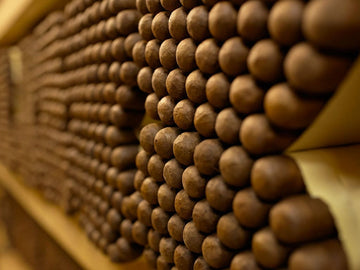How to Calibrate a Hygrometer: Ensuring Your Cigars Stay Perfectly Fresh
by John Trigiani on Jun 09, 2025

You've got your beautiful new humidor, perhaps you've even seasoned it using our essential guide. Now, there's one more critical piece of the puzzle to ensure your precious cigars stay in their prime: a properly calibrated hygrometer.
A hygrometer is the thermometer of your humidor – it tells you the relative humidity (RH) inside. Without an accurate reading, you're flying blind. You might think your cigars are perfectly humidified, when in reality, they could be drying out or getting too moist, leading to bitterness, cracking, or even mold.
Don't fret! Calibrating a hygrometer is a simple process. Let's walk through the most reliable method.
Why Calibration is Crucial
Even brand-new digital hygrometers can be slightly off. Over time, all hygrometers can drift out of calibration. Just like a watch that runs a little fast or slow, an uncalibrated hygrometer provides a false reading, directly impacting the quality and longevity of your cigars. Investing time in calibration now saves you from ruined cigars later.
What You'll Need: The "Salt Test" Method
The "salt test" is the industry standard for calibrating hygrometers because it creates a precise, known humidity level (75% RH) that your hygrometer should read.
Here's what you'll need:
- Your Digital Hygrometer: The one you plan to use in your humidor.
- Table Salt (Plain, Non-Iodized): Just a small amount, about a teaspoon.
- Bottle Cap or Small Dish: Something to hold the salt.
- Distilled Water: A few drops – again, distilled to avoid impurities.
- Airtight Container/Bag: A Ziploc freezer bag, a small Tupperware container, or any sealed container that can trap humidity.
Step-by-Step: Performing the Salt Test
Follow these steps carefully to ensure an accurate calibration:
-
Prepare the Salt Solution:
- Place about a teaspoon of plain table salt into the bottle cap or small dish.
- Add just a few drops of distilled water to the salt. You want to create a damp, pasty consistency – like wet sand – not dissolved salt water. There should be no standing water.
-
Assemble the Test Environment:
- Place the salt solution (in its cap/dish) and your digital hygrometer into the airtight container or Ziploc bag.
- Crucially, ensure the salt solution and hygrometer are not touching. Give them a little space.
-
Seal It Up:
- Seal the container or bag tightly, making it as airtight as possible.
-
Wait Patiently:
- Place the sealed container in a stable temperature environment (room temperature is fine).
- Wait for at least 6-8 hours, or ideally 24 hours. This allows the humidity inside the container to stabilize at exactly 75% RH. Do not open it during this time.
-
Read the Results:
- After the waiting period, check the reading on your digital hygrometer without opening the bag/container if possible. Some hygrometers have external displays or clear covers.
- Your hygrometer should read 75% RH.
What if Your Hygrometer Isn't Reading 75%?
This is where the calibration comes in!
- Adjustable Hygrometers: Some digital hygrometers have a small adjustment screw or button on the back. If yours reads, for example, 70% RH, and the target is 75% RH, you'll adjust it up by 5 percentage points. Re-test after adjustment if you can.
-
Non-Adjustable Hygrometers: Many affordable digital hygrometers are not adjustable. This is perfectly fine! Instead of adjusting, you simply note the difference.
- Example: If your hygrometer consistently reads 72% RH during the salt test (which is 3% lower than the ideal 75% RH), then you know it always reads 3% low.
- Applying the Adjustment: When you place it in your humidor and it reads 66% RH, you'll mentally (or physically with a note) add 3% to that reading, knowing your actual humidor RH is 69%.
Post-Calibration: Maintaining Accuracy
- Re-Calibrate Periodically: It's a good practice to re-calibrate your hygrometer every 6-12 months, or if you suspect it's giving inaccurate readings.
- Stable Placement in Humidor: Once calibrated, place your hygrometer inside your humidor away from the direct humidification source. This ensures it's measuring the overall ambient humidity.
- Monitor Consistently: Make it a habit to check your hygrometer regularly. Consistency is key to long-term cigar health.
A properly calibrated hygrometer is your eyes inside your humidor. It's an indispensable tool for ensuring your cigars are always stored in optimal conditions, allowing them to age gracefully and deliver the full flavour experience you expect.
Ready to get your humidor setup just right? Explore our selection of highly accurate digital hygrometers and humidification solutions at JohnnyCigar.com today!



